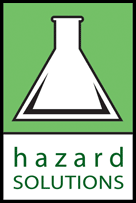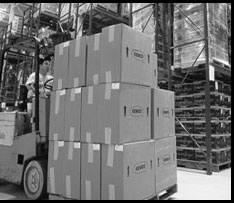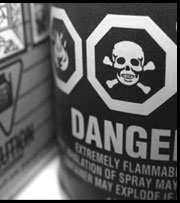A Refresher on Waste Minimization
Infobrief 1
by Art Mahoney, M.S., CHMM, REA
June 25, 2004
To Reduce or Recycle-That is the Question
Waste can be minimized by either source reduction or recycling.Reducing hazardous waste at its source is preferred over recycling since it is best for the environment and is often cheapest in the long run.There are a number of ways one can reduce hazardous waste at its source.One common method is having an inventory–control system in place.The best system is one with a real-time (computer-based) inventory that is accessible to the right people and easy to use.The system should “encourage” people to use existing products before buying more and also promote “swapping” surplus products among individuals in the organization.Needless to say, the success of this system relies on there being a policy to use the system and sufficient training.
• to reduce disposal costs
• to reduce liability
• to improve worker safety
• to reduce fees and taxes
Another way to prevent waste generation is to substitute a non-hazardous or less-hazardous product.For example, buying only mercury-free thermometers means that when it comes time to dispose of a broken thermometer, it may be disposed with your non-hazardous garbage.
Additionally an organization can aim to contain spills. The success of your spill prevention plan relies on a well thought out written plan which includes procedures to prevent and respond to spills, an adequate supply of the right spill cleanup materials nearby, and proper initial and refresher training.
Wastes may also be minimized or eliminated at their source by changing a process or technology.For example, a laboratory could decide to run some experiments on a smaller scale-thus producing less waste products.Another example is when a teaching lab pre-measures the reagents for the students.There is less waste due to spillage and surplus.More carefully monitoring a manufacturing process and/or increasing its efficiency of a process are additional ways to prevent waste from being generated.
If you cannot eliminate the hazardous waste at its source, the next best option is recycling.Recycling can be accomplished through use, reuse or reclamation. Use and reuse involve continuing to use the waste in a process without having to alter it in any way.When a company offers its corrosive waste water to another as a viable product substitution, it is recycling through use. Most parts washing machines operate on the principle of reuse by recirculating the washing solution in a closed loop back to the cleaning bath so that it can be used again.When the solution becomes too dirty it is replaced with a new solution.Reclamation involves processing the waste to regenerate a useful product.A case in point is the above example where the spent cleaning solution is regenerated (e.g., redistilled) and returned to the customer.Another example is reclaiming silver from used photo fixer.Other wastes from which useful products are reclaimed, include:used oil (redistilled), lead acid batteries(lead), broken mercury thermometers (mercury), latex paints (processed and reused for graffiti abatement).
• use—use the waste directly in a different process
• reuse—reuse the waste directly in the same process
• reclamation—recover or regenerate a component for reuse
Large Quantity Generators Must Minimize: Hazardous waste generators that generate more than 12,000 kilograms of hazardous or 12 kilograms of extremely hazardous waste (some exemptions exist) during a reporting year must meet the requirements of SB 14.These requirements include preparing the following plans and reports
- Source Reduction and Evaluation Review and Plan (Plan),
- Hazardous Waste Management Performance Report (Performance Report), and a
- Summary Progress Report (SPR).
The Plan identifies the major waste streams, proposes ways to reduce them, and provides goals.The Performance Report evaluates the effectiveness of your source reduction plan by comparing the amount of hazardous waste generated during the reporting year to your baseline year.The SPR summarizes the effectiveness of your facility’s source reduction.The SPR was due to the DTSC on September 1, 2003. The Plan, Performance Report and SPR must be maintained on site for review by the Department of Toxic Substances Control (DTSC) and other regulators.
Recent Laws and Regulations: In the last few years, there has been a lot of activity in the realm of recycling universal wastes.
Electronic Waste Recycling Act of 2003 (SB 20): Requires retailers to collect an advanced recycling fee of electronic devices.Still working on the final regulatory language.
Universal Waste Regulations (see 22 CCR Section 66273.1.).Regulations (effective since February 8, 2002) which specify how hazardous batteries, mercury-containing wastes, cathode ray tubes (CRTs) are to be managed.
Please feel free to contact me about other services at 650.347.0417 or e-mail at art@hazardsolutions.com.
Kind Regards and Good Luck
Arthur Mahoney, MS, CHMM, REA



